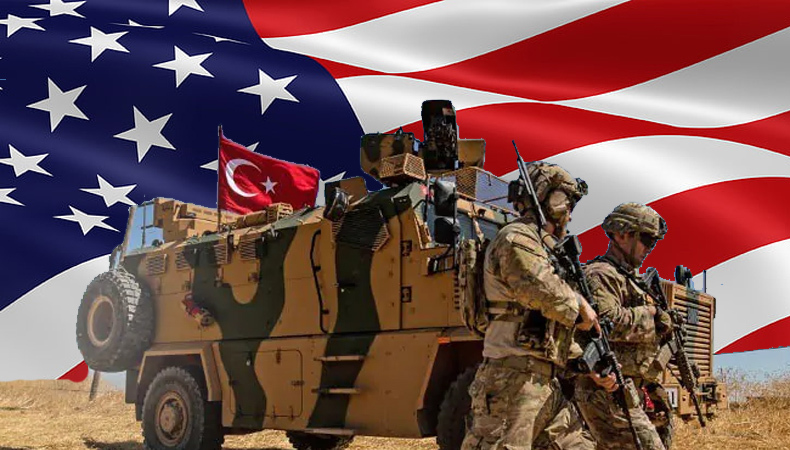Debate Over US Decision to Maintain 900 Troops in Syria Amidst Forever War Concerns

The United States has recently declared its intention to maintain a contingent of 900 troops in Syria, signaling an ongoing commitment to combating the threat of ISIS and addressing concerns surrounding the Assad regime. This decision reflects the complex dynamics and ongoing challenges in the region, as the U.S. seeks to balance counterterrorism efforts, stability promotion, and the pursuit of a political solution in Syria.
Also Read – Bashar al-Assad’s Dark Return to the World Stage: A Betrayal of Syrian Refugees
The continued presence of U.S. troops in Syria underscores the commitment to counter the persistent threat posed by ISIS. Despite significant progress in dismantling the organization, remnants of ISIS still exist, necessitating sustained efforts to prevent its resurgence. By maintaining a military presence, the United States aims to provide support to local partners, strengthen security forces, and facilitate intelligence sharing to ensure that ISIS remains contained and unable to regain territorial control.
Addressing Concerns Surrounding the Assad Regime
Another key aspect of the U.S. troop presence in Syria is addressing concerns surrounding the Assad regime. The presence of U.S. forces helps to deter the regime’s aggression and creates a balance of power, preventing further destabilization and potential humanitarian crises. It also serves as a clear signal that the United States will not tolerate any use of chemical weapons or other severe violations of international norms.
While U.S. troops remain in Syria, the broader objective is to support a political solution to the Syrian conflict. The U.S. recognizes that a sustainable resolution requires not only military efforts but also a diplomatic and political process. By maintaining a presence, the United States can continue to engage with local stakeholders, support negotiations, and work towards a comprehensive political settlement that respects the rights and aspirations of the Syrian people.
The U.S. troop presence in Syria is closely coordinated with local partners, including the Syrian Democratic Forces (SDF). Through this collaboration, the United States can provide training, advisory support, and logistical assistance to bolster the capabilities of local forces in the fight against ISIS. This partnership is vital in maintaining stability, ensuring the protection of civilian populations, and enabling local governance and reconstruction efforts in liberated areas.
Avoiding an Endless War
While the sustained presence of U.S. troops in Syria may raise concerns about an endless war, it is important to note that the objective is not to perpetuate a military conflict indefinitely. Instead, the United States is actively working towards a phased reduction of forces, while simultaneously supporting the development of capable local security forces. This approach aims to enable the gradual transition of security responsibilities to local entities, ensuring long-term stability and preventing a power vacuum.
In addition to military efforts, the United States remains committed to providing humanitarian assistance to the people of Syria. By maintaining a troop presence, the U.S. can continue to support humanitarian organizations, facilitate access to aid, and advocate for the protection of civilians in conflict-affected areas. This comprehensive approach recognizes the importance of addressing the humanitarian crisis alongside security concerns.
Also Read – Turkey’s Erdogan Faces Struggle to Meet Syrian Refugee Promise
The decision to maintain 900 U.S. troops in Syria reflects the ongoing commitment to counter the ISIS threat and address concerns surrounding the Assad regime. It emphasizes the importance of balancing military efforts with diplomatic and political solutions, contributing to regional stability, and supporting the aspirations of the Syrian people. By collaborating with local partners, pursuing a political settlement, and providing humanitarian assistance, the United States aims to gradually transition responsibilities, prevent the resurgence of ISIS, and work towards a sustainable and inclusive future for Syria.




